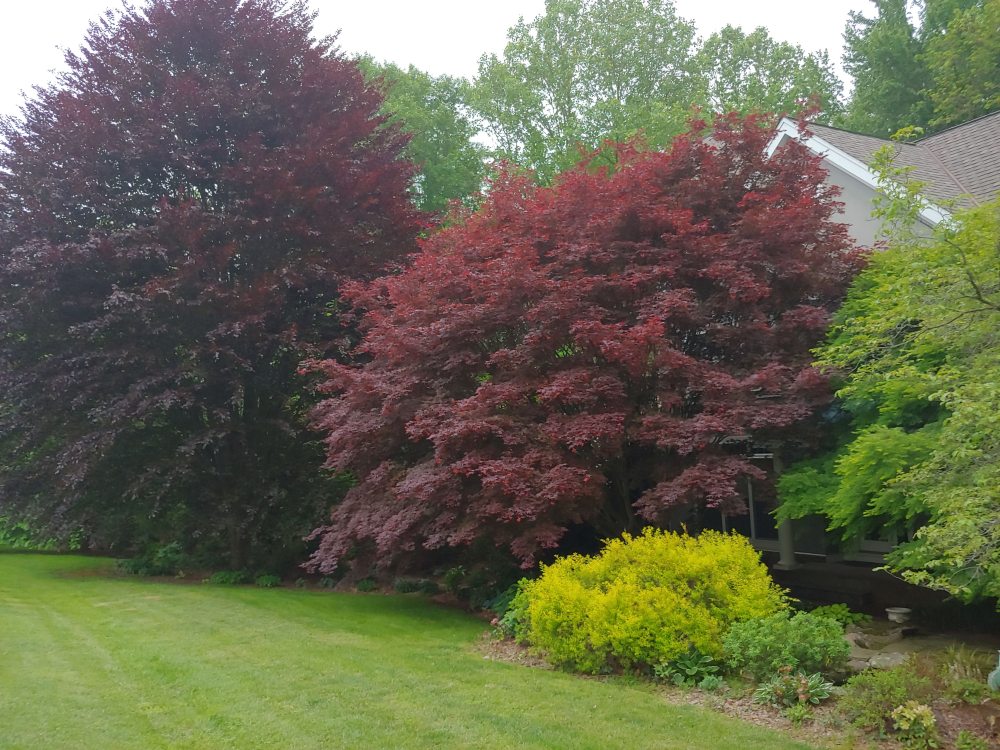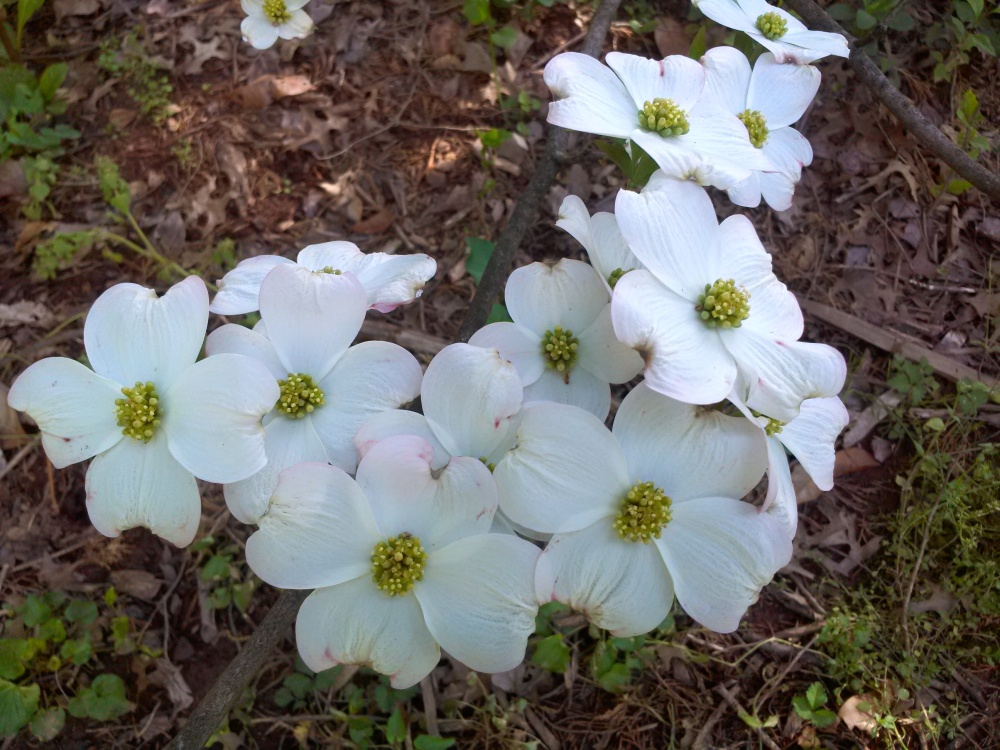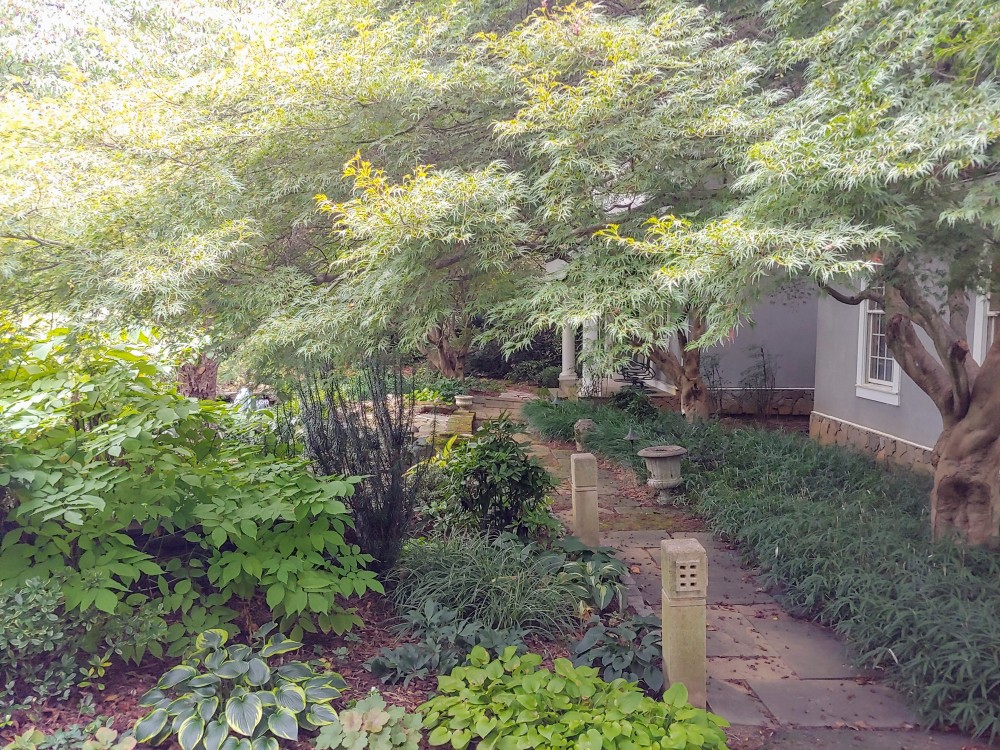After thirty years, the rhymes and reasons of this garden are occasionally garbled. Please excuse my faulty recollection if timelines are muddled. It’s a flub, not a fib, though I’m not above an innocent embellishment when the details are foggy.
Several trees have been here for the duration. I know, I dug every hole, five ponds, laid the path stones and patios, and accept credit and blame for both splendid and ill conceived design. Durable and shoddy construction are mine, a result of hard labor, but also knowing shortcuts that crept into the process. I apologize for plant choices that made sense, somehow, at the time, and yes, I would do it differently to do it again, but very little.

Nothing, or nearly nothing, is the same as when it started. The oldest pond (below) has been reconstructed five times, I think, and now a more minor redo is in order. Two of five trees planted in year one remain in place, a purple leafed European beech and the Bigleaf magnolia. One of two dogwoods perished, with the other moved from soil that was too damp too close to the house.

A Japanese maple (below) encroached on the front walk after only a few years, so it was transplanted to an expanded bed area along the driveway. In another ten years, the maple overgrew into the drive, the hazard of staying in one place for too many years.

I recall the difficult task of digging the wide spreading maple. Far too valuable to shortcut, I was determined that not a leaf be lost in the process. Until, that is, the width and weight of the roots that were dug became apparent, when in desperation a rope was stretched from my vehicle to encircle the ball of roots and soil, which was then bumpily dragged to the new position. Not advisable, but it worked.

The dogwood (above), once planted within several feet of the house, was moved into the general direction vacated by the Japanese maple. Details of this transplant are long forgotten, so the labor must have been uneventful. In any case, the dogwood survives, though it is afflicted with cankers, black spot, and mildew that are so common to our treasured native dogwood. Every year, I expect signs of decline, and if these eventually appear in another thirty years, I am unlikely to be here to witness.

I remain proud of the front walk, constructed from the thickest, pockmarked bluestones to save a dollar, but also to give a weathered appearance from the start. Not a stone has broken, and certainly the heaviest will remain long after the nearby Blue Ridge mountains have washed to the sea. Yes, one stone is raised slightly above the next, but none can, or will be moved.

The walk is overhung by two ‘Seriyu’ Japanese maples (above) that replaced the failing dogwoods in year three or four, I guess. I don’t recall my dear (but often critical) wife voicing her objections at the time, but for a period the walk was impassable following a rainstorm until branches, that now arch overhead, firmed up. While few things are exactly as expected, this was the plan from the start. Horrible design, I admit, but superb after thirty years.
Any miss-planning aside, your gardens are beautiful & utterly tour-worthy.
I like the Japanese/Asian light posts. Where did you get them?
They were from a granite importer I used to work with, but that was a long time ago.
Your canopy of Japanese maples is stunning! I’m currently in the middle of designing a new garden space and trying to decide on what shrub to put where. After reading your blog, I think the main thing to keep in mind is the mature size of the plantings.
I have to remind myself that plants grow, but so frequently I get away with letting plants figure it out on their own.
This year my most problematic muncher has been the groundhog — repeatedly munching down my mona lavender and even coming up on our deck to have a salad of parsley and sage. As it seems to be attracted by spicy aromas, I’m going to try spreading garlic paste around these delicacies. Deer repellent doesn’t seem to work, of course I won’t use that on the herbs anyway. I just love your gardens. My are a tad over 20 years and still a work in progress.
I once had a groundhog living under the shed, but he moved on when my neighbor extended the fenced enclosure around his vegetable garden a foot underground. I don’t believe this garden will ever be completed. I’m sure I’d be bored just maintaining.
I went through my favorite blogs today and I posted this message on the message board of each of them: You inspire me!
Great entry after 30 years. After 27 here on our 3 acres I have many of the same feelings you expressed. Keep up the good work!
I am happy to experience changes in the garden, additions, but also occasional losses. Most homeowners are not around long enough in one spot to enjoy their garden as it matures.
It must be so rewarding to be there so long. It is rare nowadays, particularly in California where people come to work for only a while before moving on. even those of us who want to stay can not afford to. My Pa sold his grandparents’ home because of the taxes, which cost more in three months than what was paid for the home new.
We are in a transient area wirh people from across the globe coming and going. In our small neighborhood the first two homes built are still with the original owners, but the other sixteen homes have changed multiple times. If I ever thought of moving the garden tied me more to the house every year.
I still grow the same rhubarb that my paternal-paternal great grandfather gave to me before I was in kindergarten, but it moved with me all through college and two other homes since then. I wish it had a home like the original did.
First time I’ve seen a photo of your front walk area. Absolutely awe inspiring! Like Linus, I love the Japanese posts.
Whether rhyme or reason played the bigger part in gardens, your eye for design, texture, and layering of material is, without a doubt, done with great style.
The placement of the Japanese Maples have ultimately brought attention to their beautiful trunk structure. You did it right!
What other plantings are in the front walk area? I cannot identify them from the photo.
The ground cover beneath the two Seriyu maples by the house is a low growing bamboo, I forget the variety. It is moderately invasive, so occasionally I must pluck out stems growing in hostas across the walkway.The yellow leafed shrub to the left of the walk’s entrance is Sun King aralia. Halfway to the front door is a step up to a small stone patio with a half circle pond facing the walk, and beyond that is a Bloodgood maple just to the left of the front door. Underneath are hostas, carex, hellebores, heucheras, and one of a bunch of things plugged into tiny gaps.
Detail of the front walk is now hidden by moss, but I ran into a guy getting into the business of selling concrete pavers intended for use as insets in larger areas of paving. I think there are two insets in the front walk, one with koi and the other turtles, but there are also two in the back so I’m probably confused. The concrete was too soft to be worthwhile in the marketplace, and I’m quite certain this venture quickly failed, but I got mine.